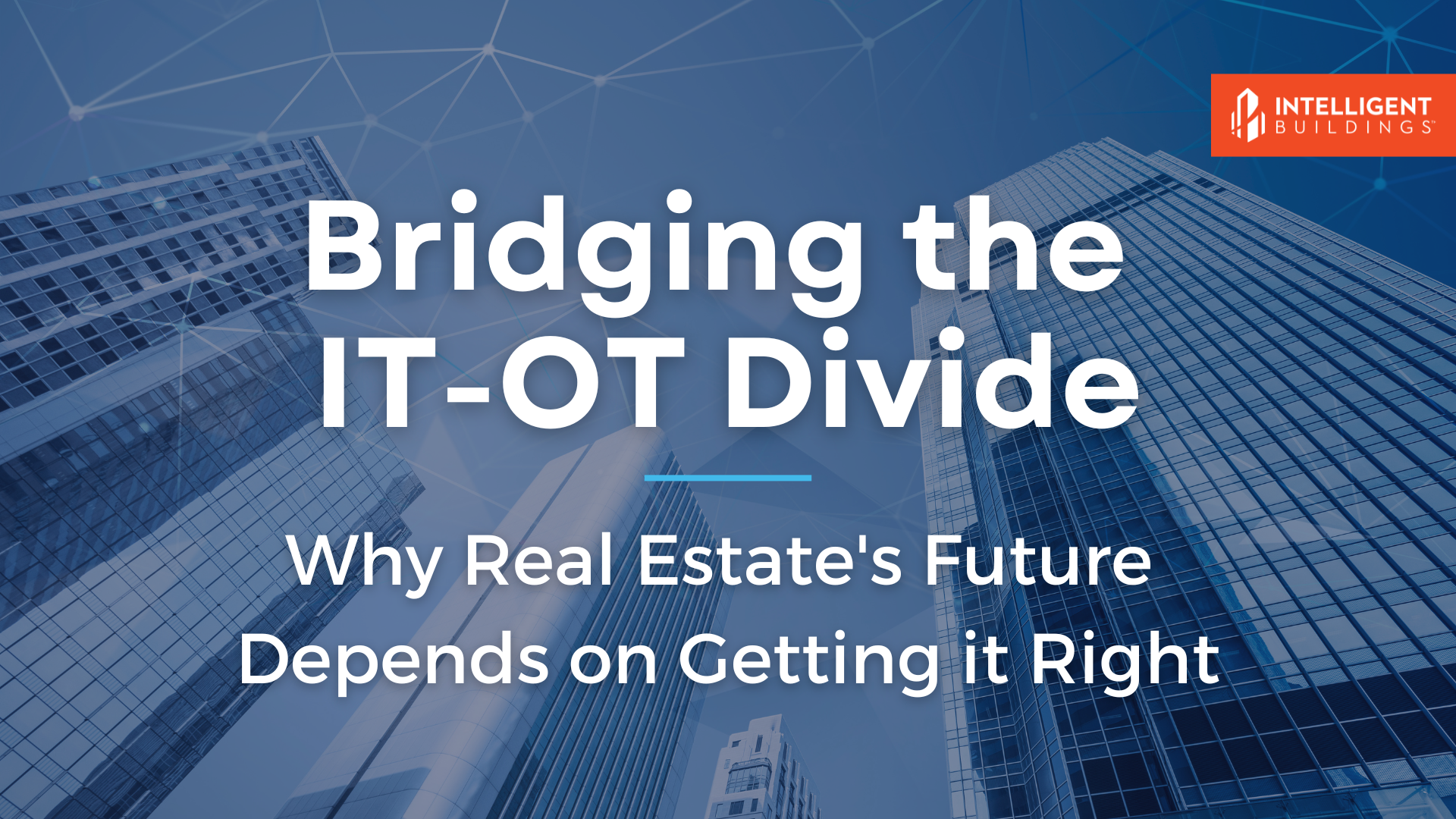
by Lachlan MacQuarrie
When I first began exploring smart building technology at Oxford Properties, I faced a dilemma that’s common in commercial real estate (CRE): Should corporate IT be involved in managing operational technology (OT)? At the time, I was working closely with Cisco Systems and Intelligent Buildings (IB) to assess their capabilities against a spider map of OT competencies. My manager, head of operations for Canada, advised keeping IT out of the conversation. He feared their involvement would lead to a loss of control over our direction, as IT’s expertise in networks and standards might overshadow our focus on building systems. Looking back, I see both the wisdom and the missed opportunities of that decision.
Understanding the Nuances: IT vs. OT
At first glance, informational technology (IT) and operational technology (OT) might seem like two sides of the same technological coin. Both involve systems, data, and networks, but their purposes and functions are fundamentally different. IT focuses on managing and securing data and communications within an organization—think email servers, financial systems, and cloud-based software. IT is designed to handle high volumes of data, prioritize cybersecurity, and enable collaboration across corporate functions.
On the other hand, OT is rooted in the physical operations of a building or facility. It oversees systems like HVAC, lighting, elevators, security access, and life safety technologies. Unlike IT systems, OT devices are often purpose-built, operate continuously, and are designed for longevity—some systems remain in use for decades without updates. OT prioritizes uptime, reliability, and operational safety, as even a minor system failure can have real-world consequences, such as tenant discomfort, building inefficiencies, or safety risks.
The differences extend to cybersecurity and system design. IT networks are often governed by strict standards, with regular updates to prevent vulnerabilities. In contrast, OT networks tend to lag in security updates due to their continuous operational demands, leaving them exposed to unique risks. Moreover, while IT systems rely on well-defined protocols and centralized management, OT systems often lack standardization and must operate across a mix of legacy and modern technologies. These disparities create challenges in integrating IT and OT, particularly in real estate, where property managers and owners often rely on both domains without fully understanding how to align them effectively.
Reflection on the Real Estate Industry
Today, the relationship between IT and OT varies significantly across organizations. In some firms, corporate IT has specific resources dedicated to supporting building operations, while in others, IT is completely absent from property technology decisions, leaving property teams to manage systems on an asset-by-asset basis. Still others use a centralized property management resource to bridge IT and OT functions. These inconsistencies slow the adoption of best practices, increase operational risks, and impede the efficient use of technology to enhance tenant experiences.
For example, corporate IT teams often don’t understand how real estate assets generate revenue. Their focus on cost containment can overlook the broader financial impact of tenant satisfaction, lease retention, and operational efficiencies. Conversely, property teams sometimes assume IT tools can be applied directly to OT environments, leading to mismanagement and inefficiencies. The result is a fragmented approach that leaves organizations vulnerable to cybersecurity threats and operational disruptions.
The Risks of Misalignment
When IT and OT functions operate in silos, the consequences can be significant:
- Cybersecurity Vulnerabilities: OT systems are often left unprotected against modern threats because they’re not designed with cybersecurity in mind.
- Inefficient Integration: Poorly aligned IT and OT systems fail to leverage data for predictive maintenance or tenant insights.
- Operational Disruptions: Misaligned systems can cause delays, miscommunication, and even system failures.
- Missed Opportunities: Without a unified strategy, organizations struggle to use technology to create tenant experiences that drive higher rents, lease expansions, and greater asset value.
Strategic Alignment: The Key to Success
My experience at Oxford Properties taught me that the best outcomes come from blending IT’s expertise with OT’s specialized focus. When we eventually involved IT in our discussions, their knowledge of network architecture and cybersecurity reshaped our strategy, allowing us to scale solutions more effectively and securely. This collaboration highlighted the potential for IT and OT to work together to:
- Drive Efficiency: Use data to optimize energy consumption, streamline maintenance, and reduce costs.
- Enhance Tenant Experience: Leverage smart technologies to improve comfort and convenience, fostering tenant loyalty.
- Maximize Asset Value: Align technology with business objectives to boost revenue and property competitiveness.
How Intelligent Buildings Can Help
Navigating the IT-OT divide is challenging, but it’s a space where Intelligent Buildings excels. Through advisory services, IB helps property managers and owners assess their technology landscape, set strategies, and implement solutions tailored to OT environments. One of our key offerings, IntelliNet, provides managed cybersecurity services designed specifically for OT systems. IntelliNet’s real-time inventory tools, rapid onboarding, and scalable capabilities make it a powerful ally in protecting and optimizing building operations.
Conclusion
The future of real estate lies in how well we manage the intersection of IT and OT. Understanding their differences and aligning their functions isn’t just an operational necessity—it’s a strategic advantage. By leveraging technology to unlock efficiency, enhance tenant experiences, and drive asset value, property managers can position themselves as leaders in an evolving industry. If you’re ready to explore how Intelligent Buildings can help you navigate this landscape, let’s start the conversation.